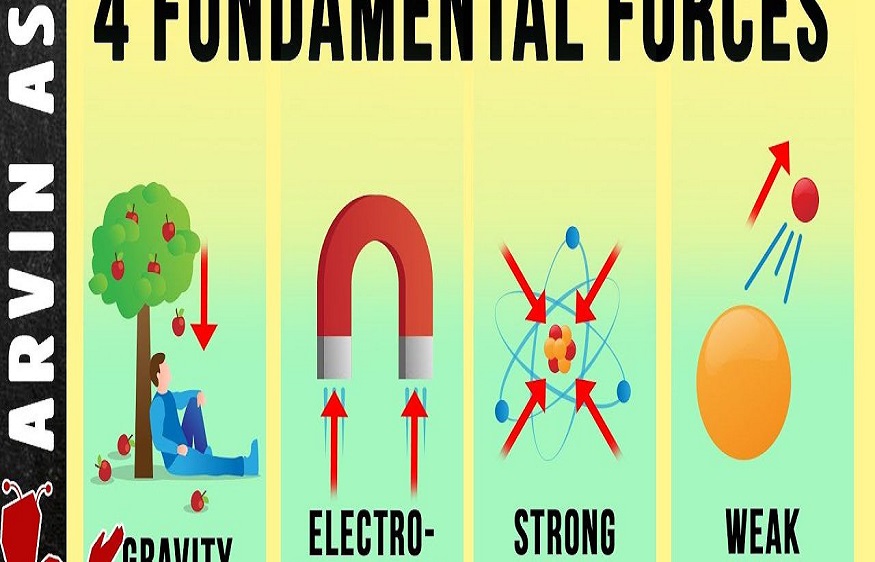In science, a force is an effect that can alter the physical state of a body. A force can influence a body to vary its velocity to accelerate (for example, moving from a rest state). Force could also be described naturally as a pull or a push. Concepts connected to force include thrust, drag, and torque. Thrust increases the velocity of a body. Drag reduces the velocity of a body. Torque generates changes in a body’s rotational speed. In an extended system, each section generally exerts forces on the adjacent sections; the force distribution through the system is the inherent mechanical stress. These internal mechanical stresses generate no acceleration of that system as the forces stabilise one another. Pressure is the distribution of numerous tiny forces exerted over a section of a system; it is a basic type of stress that can cause an object to accelerate. Stress generally creates the deformation of solid substances or the motion of fluids.
The standard version of Newton’s second law describes that the total force acting on a body is the rate at which the momentum varies with time. If the body’s mass is constant, the law points out that the acceleration of a body is proportional to the total force exerted on the body, is in the orientation of the net force and is inversely proportional to the body’s mass. Force is a vector quantity, as it has both direction and magnitude. It is calculated in newton unit (N). Force is denoted by the character ‘F’.
With advancements in technology and quantum mechanics, particles can be accelerated close to light speed. In order to analyse these extreme scenarios, particle physics has come up with the Standard Model to explain the natural forces between subatomic particles. The Standard Model says that exchanged particles, known as gauge bosons, are the basic ways by which forces are absorbed and released. Only four fundamental interactions are known to us. In the order of descending strength, they are the strong force, electromagnetic force, weak force and gravitational force. Physics related to high-energy particles observed during the 1970s confirmed that electromagnetic and weak forces are substrata of the more basic electroweak interaction.
Four Fundamental Forces
There are universal forces in the known Universe. Without these fundamental forces, every matter in nature will break apart. Force is any push or pull that causes a body to change its physical form (motion, shape and size). Issac Newton stated that a force is something that causes a body of mass to travel with acceleration. The following are the four fundamental interactions or forces in the Universe:
- Gravitational Force
- Strong Nuclear Force
- Electromagnetic force
- Weak Nuclear Force
Gravitational Force
Gravitation is the weakest and most widespread force among the fundamental forces. Gravity is the force of attraction between two bodies that have energy and mass, whether this is viewed in dropping the ball from a building, a planet revolving around the moon or a star causing ocean tides. Gravity is the most familiar and intuitive of the basic forces, but this force is also one of the weirdest to explain.
Issac Newton was the first physicist to propose the concept of gravity. Legend says that the discovery was influenced by an apple from a tree. Newton described gravity as a direct attraction between two bodies. The SI unit of force is also named after Issac Newton. Many decades later, Albert Einstein put forward, through the general theory of relativity, that gravitational force is an attractive force. Instead, it’s a byproduct of massive bodies bending space-time fabric. A celestial body works in space-time a bit similar to how a big ball placed in the centre of a rubber sheet deforms that material, causing other bodies on the sheet to move toward the centre.
Strong Nuclear Force
The strong nuclear force or strong interaction is a fundamental force that binds quarks into neutrons, protons, and other hadrons. The string force also acts as the binding force of protons and neutrons to make up the atomic nuclei (called the nuclear force). The majority of the mass of a common neutron or proton is caused by the strong force energy (individual quarks make up only around 1% of a proton’s mass. About the range of 10-15 m (just more than a nucleon’s radius), the strong nuclear force is around a hundred times strong as electromagnetic force, one thousand and thirty-eight times as strong as gravitational force, and a hundred six times as weak force.
The strong force is there at two ranges and regulated by two force carriers. On a wide scale (about one to three femtometres), it is the force that binds neutrons and protons together to form the nucleus of atoms. On a relatively smaller range (less than the radius of a nucleon), it is the force that binds quarks together to make up neutrons, protons, and other hadrons. In this context, it is often called the colour force.
The strong interaction has such a high strength that hadron particles bound by the strong interaction can generate new heavy particles. Therefore, if hadrons are bombarded with highly energetic particles, they produce new hadron particles instead of emanating freely flowing radiations. This characteristic of the strong force is known as colour confinement, and it restricts the free emission of the strong nuclear force; instead, in reality, streams of massive particles are created.
Electromagnetic Force
The electromagnetic force forms between charged entities, like positively activated protons and negatively activated electrons. Like charges repel, while opposite charges attract one another. It is also known as the Lorentz force. The larger the charge, the larger the force. Just like gravity, electromagnetic force can be experienced from a far away distance (however, force may be very small at that length). As the name suggests, this force is made of two components, the magnetic force, and the electric force. In the beginning, scientists considered both forces separate from each other, but later, it was realised that the two forces are part of the same force.
The electric force component exists among charged particles, even if they are stationary or moving, generating a field by which charged particles can affect each other. But once particles are in motion, those particles begin to show the second force component, which is nothing but the magnetic force. These particles produce a magnetic field as they are in motion. Therefore, when electrons flow through a conducting wire to charge your phone or TV or laptop, the electric wire becomes magnetic.
Weak Force
In particle physics, the weak force is the mechanism of interaction between particles that is responsible for radioactive atomic decay. It is also called weak interaction or weak nuclear force. The weak force participates in nuclear fusion and nuclear fission. Quantum flavourdynamics is the theory that describes the behaviour and effects of the weak force. Interestingly, this theory is not often used, as this force can be studied using the electroweak theory.
Scientists describe this force through the exchange of force carriers called bosons. Particular types of bosons are the reason for the weak nuclear force, the strong nuclear force and the electromagnetic force. In the weak interaction, the bosons are charged entities known as W and Z bosons. If particles such as electrons, neutrons, and protons come within 10-18 metres, or 0.1% of a proton’s diameter, of one another, they transfer these bosons. Consequently, the particle decay into new subatomic particles.
The weak interaction is crucial for the fusion reaction that fuels the Sun and generates the energy required for most living things here on Earth. It’s also researchers can also make use of carbon-14 to date ancient wood, bone, and other living remains. Eight neutrons and six protons. One of those neutrons decomposes into a proton to convert into nitrogen-14, which has seven neutrons and seven protons. This process occurs at a predictable rate, enabling researchers to find how old such artefacts are.
Unified Interactions
Physicists Steven Weinberg, Sheldon Glashow (Harvard University), and Abdus Salam (Imperial College London) were awarded Nobel Prize in Physics in 1979 for unifying the weak force with electromagnetic force to form the base of the electroweak force. Researchers working to develop the so-called unified theory want to merge the strong force with the electroweak force, which physicists have predicted but not yet observed. The final puzzle could then need to unify electronuclear force with gravity to construct the much-anticipated theory of everything, a hypothetical everything that could describe the whole existence of the Universe.
However, researchers have found it very difficult to unite the macroscopic realm with the microscopic realm. At a huge scale, especially astronomical range, gravity completely dominates the Universe. It is best explained by Albert Einstein’s general theory of relativity. But at the subatomic, atomic, or molecular level, quantum mechanics effortlessly explains the known Universe. Until now, no physicist has come up with an effective theory to unite the physics behind these two physical realms. String theory was once considered to be an ideal one to merge the quantum and macroscopic worlds. Unfortunately, it is not supported by observational studies.




